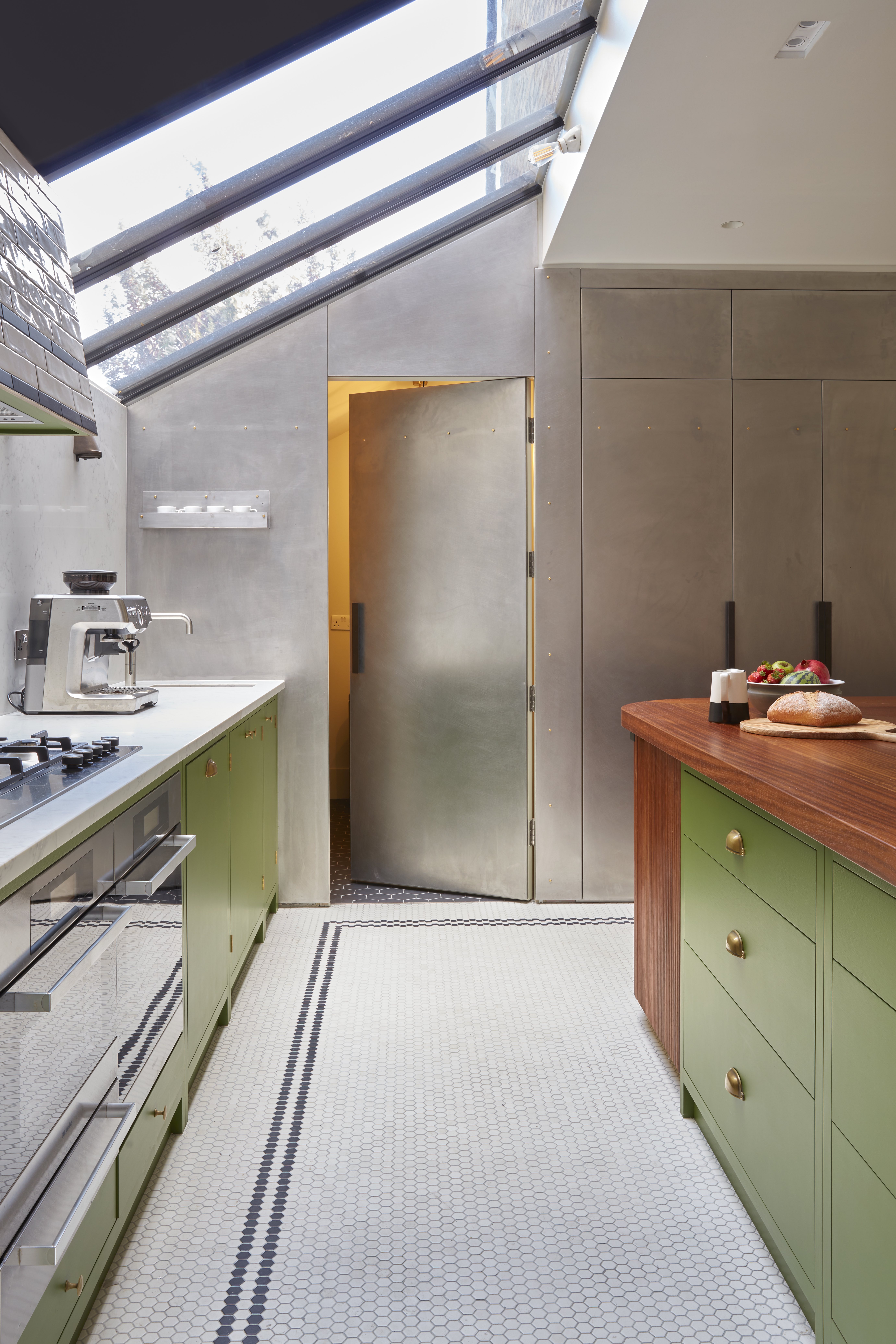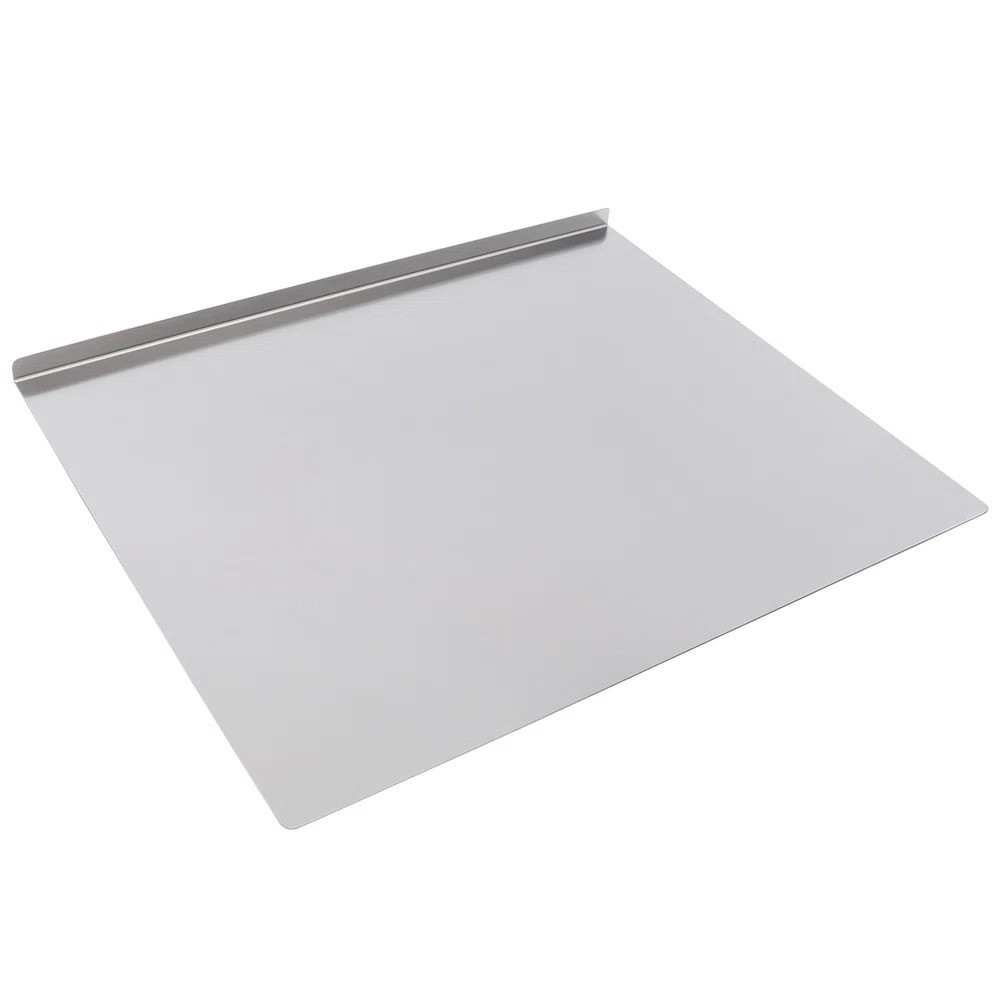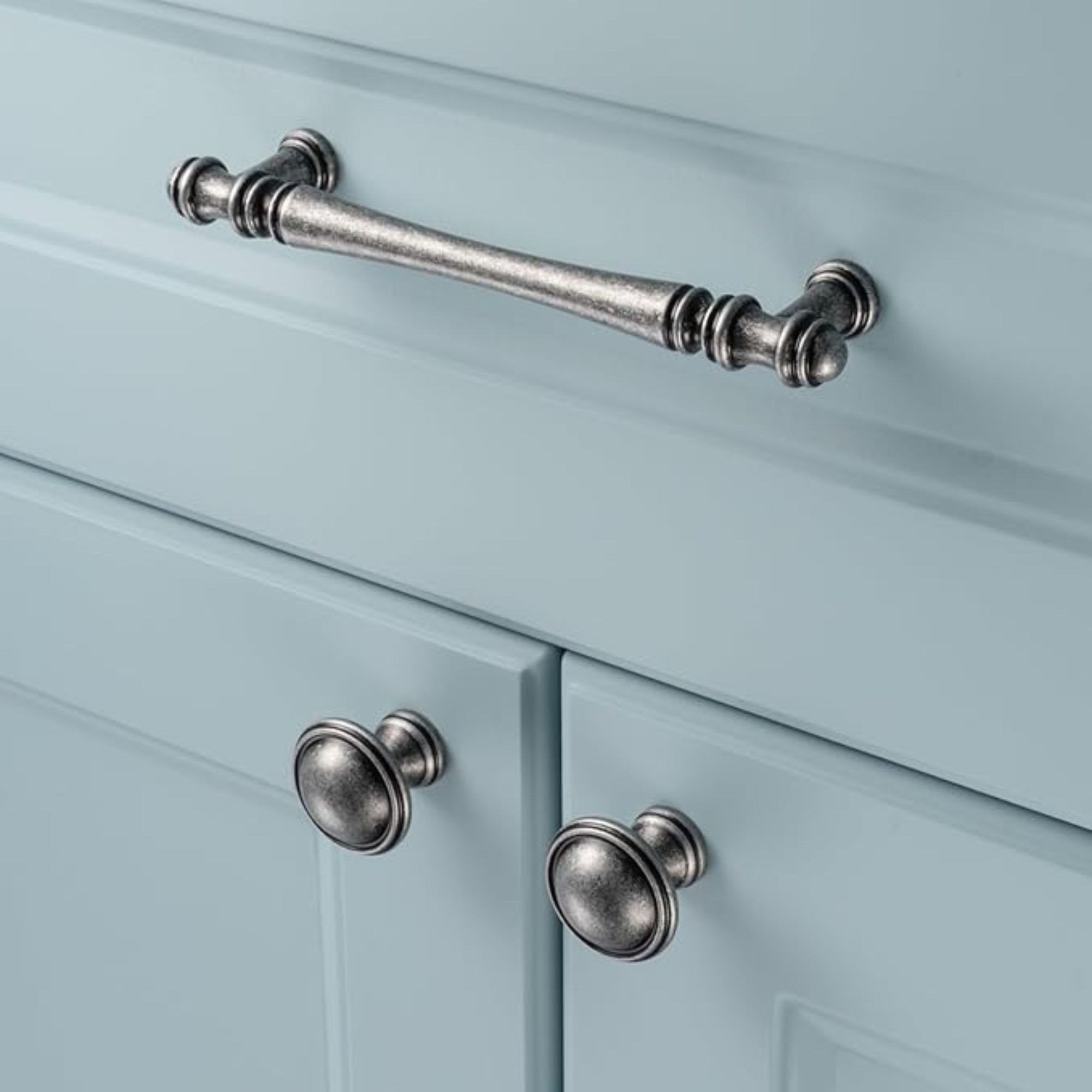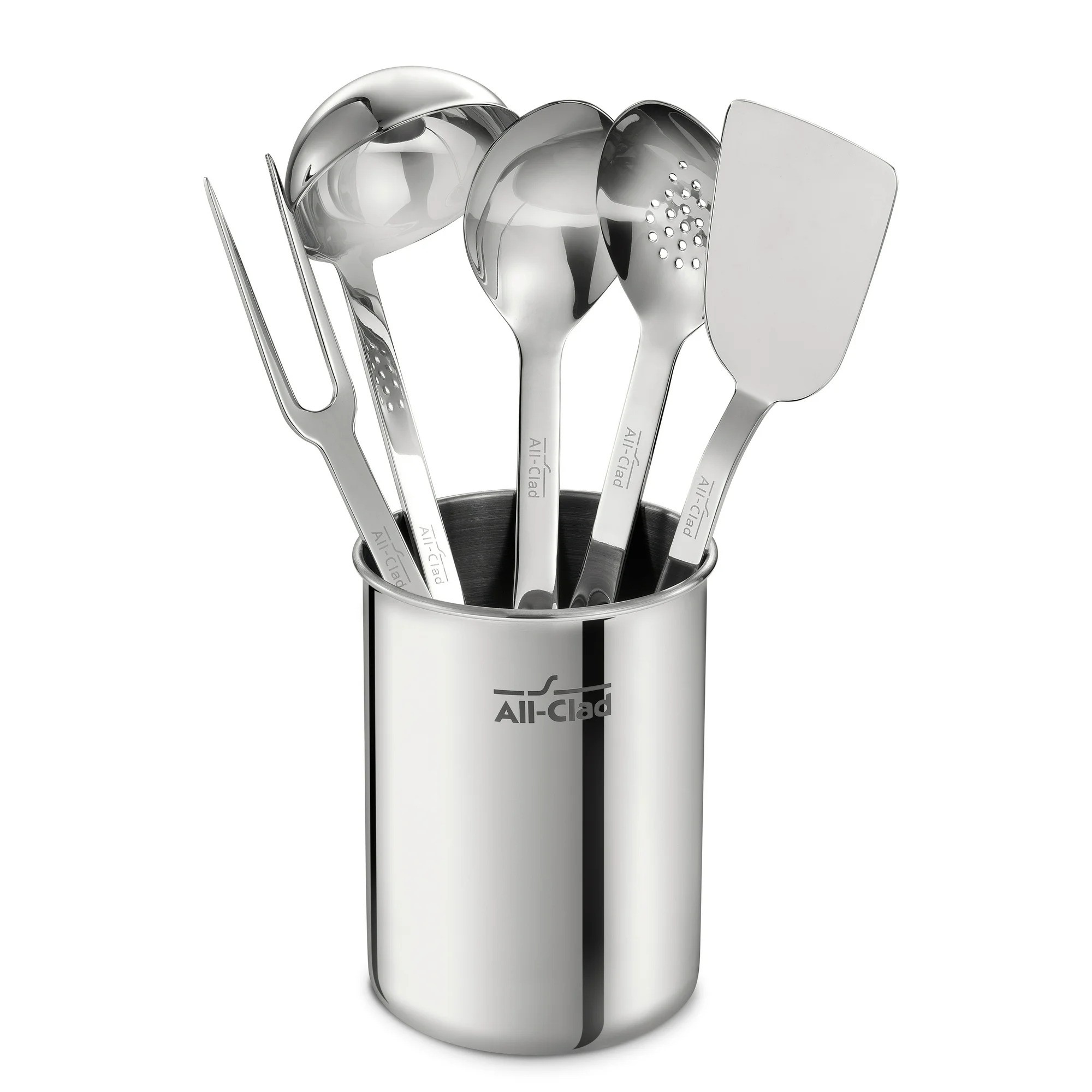
If you were asked to picture a traditional Martha Stewart kitchen, a spacious, country-style setting will likely come to mind. The lifestyle guru is famous for bringing a warm, lived-in feel to the kitchens – from the Turkey Hill farmstead to her coastal abode in Seal Harbor, Maine. In New York City, however, things are done a little differently.
In her apartment on Fifth Avenue, Stewart designed a galley kitchen with an industrial twist. According to Martha Moments (an Instagram page dedicated to sharing archival Stewart footage), the metal cabinets and countertops were made by a laboratory furniture production company in Brooklyn called Duralab. The result was a sterile yet highly functional (and uniquely modern) space.
'It was basically a service kitchen, Stewart says. 'I wanted dishes, linens, and silver for entertaining 40 people for a standup buffet. But it had to fit this long, peculiar space. I called it a galley alley. And I didn’t want anything sitting out. It wasn’t a country kitchen.'
As seen in the photo carousel below, the metal kitchen makes intelligent use of the limited space. The sleek metal finish was easy to clean, while the cabinets were made to support 200 pounds per square foot – keeping her heavy equipment safe.
Despite dating back through the decades, Stewart's galley kitchen offers lessons in style and functionality that remain today. Most crucially, designers say we should take notes on the abundant use of metal – and how its qualities are unrivaled.
'One of the biggest advantages of using metal in a kitchen is the sophistication and depth it brings – qualities that many other materials simply can’t match,' comments Charlie Smallbone, the founder of Ledbury Studio.
'At the studio, we focus on real metal fascia, such as copper, pewter, zinc, and bronze, which offer an authenticity that sprayed metallic finishes on wood just can’t replicate. The result is a more refined, high-end aesthetic that elevates the entire space.'
Despite its strength and practicality, however, the best metallic kitchens result from meticulous planning, as Smallbone explains.
'Choosing the right finish for each area is essential. ‘Living metals’ – which develop a natural patina over time - are ideal for cabinet doors or island exteriors, where they can mature beautifully without excessive wear. However, in high-use areas such as worktops or sinks, sealed finishes are a better choice, preventing unwanted discoloration and ensuring long-term durability.'

Whether you opt for specific elements, like a metal backsplash, or you follow Stewart's example and go all-out metallic, you can better prolong your kitchen's lifespan with some simple tips.
'To enhance longevity, we typically apply specially formulated coatings to metals like copper, preserving their beauty while protecting them from everyday kitchen conditions. This allows homeowners to enjoy the aesthetic appeal of metal without worrying about practicality,' Smallbone advises. Alternatively, we love these metallic accents – perfect for bringing a small amount of this powerful material into any kitchen.

Featuring a L-shaped Folded Edge, this clever design allows the entire cutting board to be firmly fixed to the table, making it less likely to slide and easier for you to operate during every meal prep.

Antique-style designs look right at home in a traditional kitchen, and this cabinet pull has a lighter finish. It comes in a ten-pack with five various size options.

Made of durable and high-quality polished stainless steel with a mirrored finish, this is the ultimate kitchen tool set. They have a thick construction, so they will not break or bend, no matter how often you use them.
'While some designers avoid mixing metals, I encourage blending different finishes to create a more dynamic and visually interesting space,' Smallbone adds.
'A carefully curated combination – such as aged pewter cupboards alongside copper-fronted cabinets – adds depth and contrast, moving away from the overly coordinated, ‘matchy-matchy’ fitted kitchen look. Instead, it creates a more eclectic, personalised design that truly reflects individual style.'







